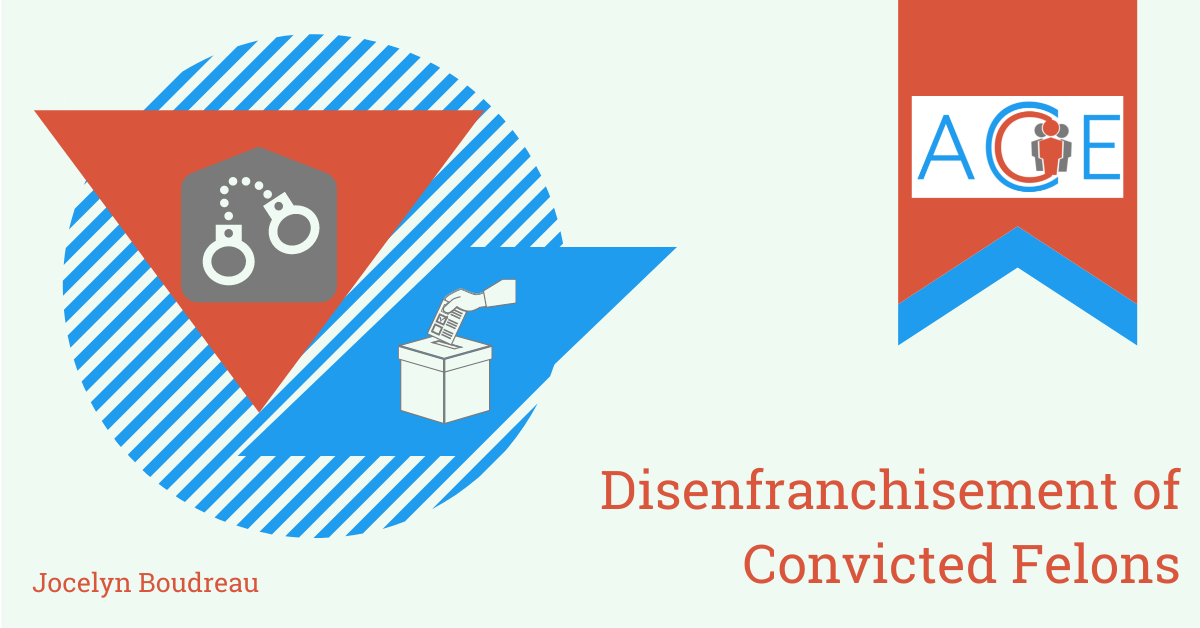This brief was originally published on October 6, 2021 by Jocelyn Boudreau. It was updated and republished by Olivia Schroeder on July 28, 2022.
Migrants, Refugees, and Asylum Seekers
In the United States, a refugee is defined as a person “who has fled their country because they are at risk of serious human rights violations and persecution” without their home government being able, or willing, to protect them. Refugees are registered with international agencies and undergo a background check to ensure they meet specified requirements. Asylum seekers apply for asylum at a U.S. port of entry, and are not guaranteed protections or aid until their background is verified and it is confirmed that they fled persecution in their home counties. “Migrant” is an umbrella term used to describe any person who has left their home country. This includes asylum seekers, economic migrants, or those fleeing natural disasters.
Crisis at the Southern Border
Statistics on encounters, expulsions, and apprehensions at the border form a holistic impression of the events at the southern border.
- Encounters are measured by the number of migrants coming in contact with Customs and Border Patrol (CBP) or Immigration and Customs Enforcement (ICE) agents at the border. Encounters gauge how many people attempt to cross, but do not reflect successful crossings. According to the Associated Press, border encounters reached about 75,000 in December 2020, the final month of President Trump’s term, and surpassed 172,000 in March 2020 under President Biden. 71 percent of encounters recorded in February 2021 were single-adult encounters, but family encounters are rising: families and minors comprised more than 40 percent of encounters in March. To officially seek asylum, migrants make their claim to the first CBP or ICE official they encounter. Alternatively, they may submit an application for an asylum grant, followed by an employment authorization while they await their hearing.
- Apprehensions and expulsions both follow from encounters, but result in different outcomes that project a more complete picture of the border situation. When a migrant(s) is apprehended, they are admitted to the United States to be placed in custody to await their hearing. If a migrant is not apprehended, they are not granted entry into the US and face expulsion. Expulsion involves being sent back to either their home country or the last country of transit by CBP and ICE agents. The percentage of expulsions dropped from 92% in July 2020 to 47% in July 2021. An influx of migrants, refugees, and asylum seekers arriving at the Southern border led President Trump to issue a national emergency declaration in 2019. Trump’s executive action allowed about $8 billion in funds from several sources to be allocated towards border security measures. The funding was intended to act as a budget for constructing a border wall between Mexico and the United States. Combining Treasury Department and Department of Defense drug forfeiture funds with military construction and Congressionally-delegated budgets, the Trump administration gathered enough money for 234 miles of border wall.
Before the barrier was finished, the emergency declaration was reversed by the Biden administration in January 2021. President Biden halted the construction of the wall and terminated contracts made with private construction agencies. However, there is a question as to whether Biden has the right to redirect the funds for the construction of the border wall as military funds were involved in Trump’s budget. As thousands of migrants attempt to enter the United States from its Southern border, the issue has developed into an argument of whether the crisis lies in the overwhelming amount of immigrant arrivals, or the conditions from which they seek refuge.
The Biden Administration
Immigration reform was a major priority for the new Biden administration. So far, Biden has focused on rebuilding the current immigration system. The administration implemented a policy that does not deny any unaccompanied minor when seeking asylum. President Biden blocked the expulsion of unaccompanied minors at the southern border, which was previously in practice under the Trump Administration when Title 42 was put into place. The CDC stated that they recognized the “unique vulnerabilities” of unaccompanied minors and that the expulsion of these migrants isn’t warranted to protect public health standards. Title 42 allowed for the expulsion of migrants when the pandemic began in 2020. However, the policy can still be used to expel single migrants and families of migrants. The Build Back Better Act passed the House in November of 2021 which allows seven million immigrants to apply for protection from deportation, work permits, and drivers licenses. This is a step away from Trump-era policies which focused on securing the border and stricter immigration policies. President Biden has proposed an eight year path to citizenship for immigrants. The policy will allow for the estimated 10.5 million undocumented immigrants who already reside in the US a pathway to legal status. Undocumented migrants would be able to apply for temporary legal status and green cards if/when they pass a criminal background check. According to the White House, the benefits to Biden’s plan are “ [the modernization] of the immigration system, [prioritizing] keeping families together, growing our economy, responsibly managing the border with smart investments, addressing the root causes of migration from Central America, and ensuring that the United States remains a refuge for those fleeing persecution.” However, a benefit of Trump’s plans for immigration is that the US would not need to take all of these steps and documentation wouldn’t be necessary if the border was more secure, unauthorized immigrants were deported, and not given asylum-seeking status.
Public Health Concerns
In the months leading up to the coronavirus outbreak, CBP and ICE practices sparked outrage amongst human rights activists. Border police detained migrants outdoors, in a fenced-off area under an El Paso bridge, when facilities became overcrowded. Although CBP officials ended this practice in April 2019, lack of space and supplies continued to be an issue at border facilities. An exposé detailing inadequate conditions in a Clint, Texas CBP facility revealed a trend apparent in many detention centers. Migrants were held in small spaces without proper nutrition or sanitation; lights left on 24 hours a day or no electricity at all; cold temperatures with no blankets, pillows, or beds; no running water and no private restrooms.
Under these conditions, even mild contagions spread with ease. Following the outbreak of the coronavirus pandemic, CBP facilities gained attention as catalysts for spreading the virus. Of the nearly 40,000 migrants detained since the beginning of the pandemic, 78 tests were administered, and many were positive for COVID-19. It was also revealed that positive and symptomatic detainees were not isolated from other migrants, exposing thousands to the risk of contracting the virus. Title 42, a Trump-era policy which is still in use, was put into place in an attempt to stop the spread of the virus in holding facilities. The policy will be reviewed every sixty days in regards to the spread of the coronavirus. Under the legislation, anyone suspected of bringing a communicable disease into the US to all land and coastal entry points is prohibited from entering the country.
The effects of the pandemic have impacted the rates of migration across the US-Mexico border. As the Biden Administration has not taken the same hardline approach to border security, some have raised concerns that migrants are “encouraged” to migrate into the United States.
Expelled to Danger
In addition to health concerns, migrants face dangers in the territory surrounding the border. A Trump-era policy, known as the “Remain in Mexico” policy, mandated that migrants seeking to enter the United States were to await their court hearings within Mexico, or be sent back to their home country to wait. Previously, the asylum process once took a few months, but now it can take two to five years to complete. The Biden Administration briefly stopped the“Remain in Mexico” policy, but it was reinstated in December of 2021 after a Supreme Court ruling in its favor.
Endangerment Under Government Watch
A 2014 complaint filed on behalf of 116 children detailed accounts of sexual, physical, and verbal abuse in addition to denial of adequate food, water, and sanitation in holding facilities at the border. According to the document, 80 percent of children reported these consistent offenses. The Biden Administration, as mandated by US anti-trafficking laws, has been transferring non-Mexican minors to shelters overseen by the government. This policy has also resulted in minors spending less time in holding facilities than they did during the Trump Administration.
These human rights violations have spanned multiple years, and multiple presidential administrations. Today, the Biden administration still manages overcrowded migrant facilities, especially in trying to maintain social distancing measures to minimize spreading COVID-19.
The Biden Administration is seeking to send unaccompanied migrant children to live with relatives or sponsor families, and plans to use convention centers near the border for CBP operations in order to decongest the current facilities. This new policy differed from the “Zero Tolerance Policy” of the Trump Administration which did not allow families to reconnect. As of 2021, Biden has reversed this specific process and many, but not all, families have been reunited.
Politicization of the Crisis
Among US politicians, there are two lines of thought when assessing the crisis at the Southern border. On one hand, some progressives believe giving any funds to CBP and ICE operations condones the inhumane treatment of immigrants and asylum seekers. Designating money to these agencies permits the continuation of unsafe, unsanitary detention centers. However, removing all, or most, funding does not ensure that conditions will improve. On the other hand, there is the “smart money” group that advocates for strategic designation of funds. This sect sees the issue as an inefficient use of resources that cannot be solved by rescinding the entire budget. In a system that has been suffering from a severe lack of resources, removing any chance of providing necessities to migrants will not solve the problems these agencies face.
There is also debate surrounding the origins of the crisis at the border. Some believe the issue is the volume of asylum seekers, and seek to increase funding for CBP and ICE operations to address the influxes. Others believe the core of the problem is the environment which produces asylum seekers. They want to designate more funds to aiding Central and South American countries experiencing regime changes and political violence.


